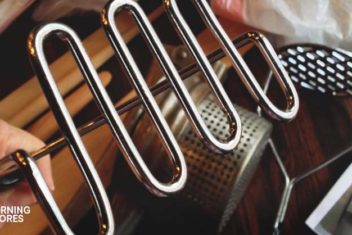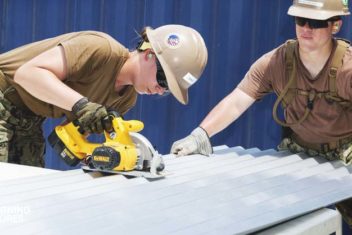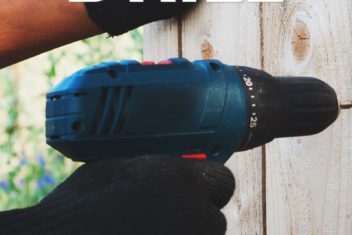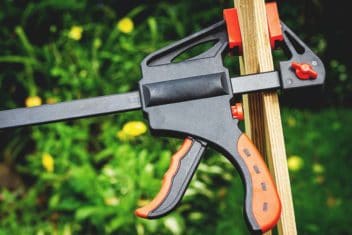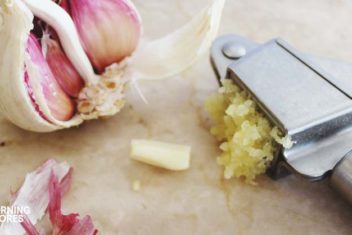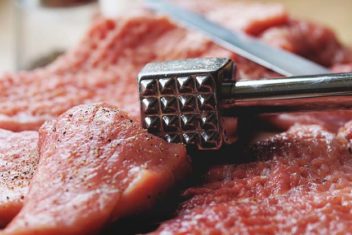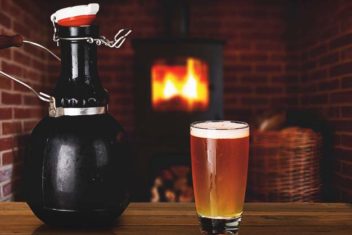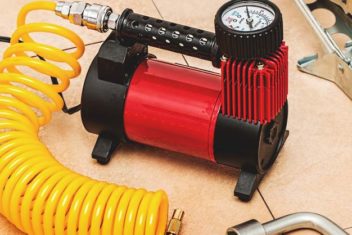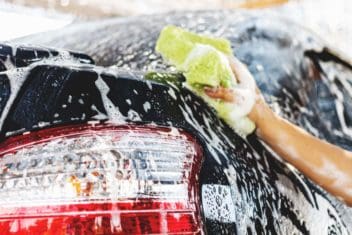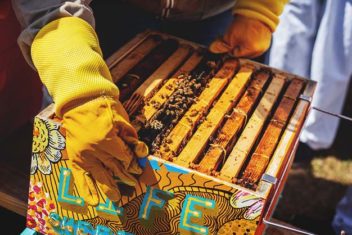Winter may still hold our gardens in its icy grip, but spring is just around the corner, so now is the perfect time to start planning your garden. There are decisions to be made: what kinds of flowers will you plant and what types of veggies will you grow in your veggie patch.
We all have different types of gardens or ways of growing plants. Some people live in suburbia and have a good amount of backyard space in which to plant their flowers and veggies. City dwellers might have access to market gardens where they can have their own little veggie patch. Urban gardeners who live in an apartment with only a small balcony will grow their colorful foliage and cultivate fresh veggies in pots.
Wherever you live and however you choose to garden, a seed starting mix will give your flowers and veggies the best start to life, and ultimately reward you with your own piece of horticultural heaven.
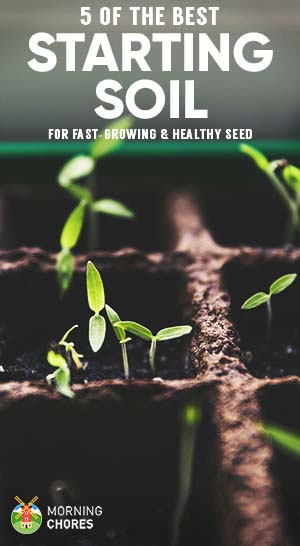
The 5 Best Seed Starting Mix
- Black Gold 1311002 Seedling Mix
- Espoma Seed Starter Potting Mix
- Jiffy Seed Starting Peat Pellets (Our Top Pick)
- Hoffman 30103 Seed Starter Soil
- Kempf Compressed Coco Coir Block
Our Top Pick for the Best Seed Starting Mix
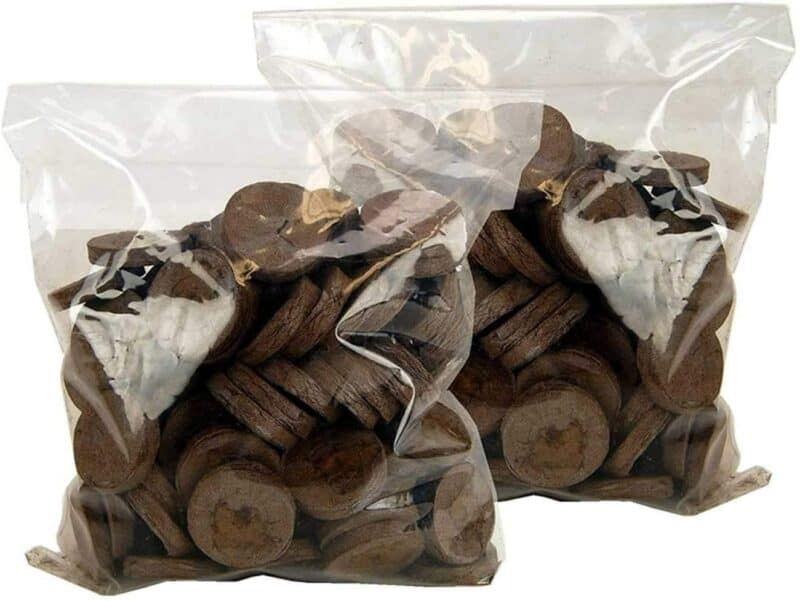
Our top pick for the best seed starting mix is the Jiffy Seed Starting Peat Pellets.
These seed starting pellets are the easiest way to get your indoor or outdoor planting projects done. Once you plant seeds or seedlings in the quality peat, you and your kids will love watching your budding plants turn into beautiful blooms and healthy vegetables.
Check the price on AmazonWhat is a Seed Starting Mix?
A seed starting mix, which can also be called “seed starting soil,” helps the seed to germinate into a seedling and then into a full-grown plant. Some people also like to purchase seedlings from their local nursery. However, this is not always the best choice as the seedling may have picked up containments or other plant diseases.
By growing your plants from seed, you can control the process from seed to plant to plate. It can be fun, especially for kids, to wait eagerly, and then be filled with delight when the first leaves begin to appear, and then the full flower blooms or the veggies start to grow.
Soil-Less
A soil-less seed mix means that the mix does not contain any field or ordinary garden soil. Regular field or garden soil can contain diseases and contaminants, which can be especially harmful to vulnerable seeds and seedlings.
Sterilization
You might come across the word “sterilize” in relation to seed starting mix or even potting mix, which means the manufacturer has used a heating process to kill off any bacteria or fungi or mold that can restrict the growth of your seeds and plants.
Some gardeners may choose to make their own mix, but sterilization will make sure that your seed grows into a strong and healthy plant.
Potting Mix vs Seed Starting Mix
The potting mix is probably the most well-known type of gardening product for planting flowers and veggies. The potting mix is great for re-potting plants. However, it may not be ideal for planting seeds or seedlings as it can be too rich. Also, it has a coarser texture and does not drain very well. Good drainage is necessary for a seed to germinate and grow into a budding plant.
However, in its favor, the potting mix contains fertilizer, so from seed to plant, the potting mix will feed your flowers or veggies the nutrients they need.
A seed starting mix is the preferred option as opposed to a potting mix for those gardeners who prefer to plant seed, not seedlings or cuttings. It is more desirable for 3 reasons:
- It has a superior germination process.
- The mix is usually more lightweight than the potting mix.
- It absorbs water easily and allows for plenty of air circulation, which is very important for the seed to be able to grow and develop into a plant.
The main difference between a potting mixture and a seed starting mix is that the seed mix usually does not contain any fertilizer. The seed provides the necessary nutrients for the budding plant, so it does not need fertilizer. Once the plant starts to sprout leaves, you can start to add fertilizer for ongoing nutrients.
One thing to keep in mind in regards to fertilizer is that some seed /potting mixes contain just enough fertilizer that will provide seeds with sufficient nutrients to last up to 3 months or until they are grown into baby plants, while other brands may not add any nutrients. Think of it this way – a seed starting mix kickstarts the seed into accelerated growth mode.
How to Choose the Best Seed Starting Mix
Lightweight and Hydrated Mix
For your seed to grow into a healthy seedling, the best seeding mix is a lightweight and well-drained soil that has a balanced mixture of organic materials like vermiculite or perlite. The soil mix should also have excellent aeration and water retention properties so that the seed’s root can push through and have room to grow.
Some companies use an organic wetting agent to provide extra hydration like a Yucca extract, which is taken from a root vegetable to help stop the soil from drying out.
Sphagnum Peat Moss
Most seed mixes contain sphagnum peat moss, which is lightweight and highly absorbent and it helps to retain moisture for your seeds. Products that use peat moss are especially beneficial for when you are gardening in dry weather or when you forget to water your plants. The downside to using peat moss is that it can be difficult to moisten.
Perlite
Perlite looks a bit like Styrofoam, small white pieces of natural volcanic mineral that can also help to provide adequate aeration and water retention to the soilless mix. It also prevents the soil from compacting and helps it to drain faster. It can also be used to cover the seeds and help them to maintain a consistent moisture level as they germinate.
Vermiculite
Vermiculite is a naturally occurring mineral, which is found in a lot of potting mixes and can be especially helpful for planting seeds. It keeps the soil nice and moist so that the seeds or seedlings do not dry out. It can also save you from having to continually water the seeds.
Coconut Coir Fiber
Coconut coir fiber can be used as a substitute for sphagnum peat moss. It is used for a wide range of horticultural and agricultural uses. It can absorb and hold up to 8+ times its own weight in water. Many manufacturers offer their coconut coir in bricks. So you can just break off a piece when you need it and rehydrate it in a bucket of water.
Diatomaceous Earth
Some manufacturers use Diatomaceous Earth (DE) as their seed starting mix. It acts like a natural, non-toxic fertilizer that will kill any insects from affecting the germination of seeds or seedlings. DE is a naturally occurring siliceous sedimentary mineral that is made from tiny fossilized algae-like plants called diatoms. The diatoms are ground up to a fine powder that looks similar to talcum powder.
DE is composed of many minerals such as magnesium, silicon, calcium, sodium, iron, and other trace minerals: titanium, boron, manganese, copper, and zirconium. DE can also help to eliminate any harmful bacteria or toxins from attacking your seeds and plants.
Organic
Organic food or products are rising in popularity. Many people are going “green” and they want their food to be free from harmful chemical additives, synthetic fertilizers, and insecticides. Environmentally friendly products are an important choice as well.
Many companies are responding to this shift and making products that they claim are organic. Many of them are, but just because the product says it is “organic” does not mean it is certified organic. So read the fine print or contact the company to make sure that the product is properly rated as an organic product or it contains organic ingredients or materials.
PH Soil Levels
The pH level is the measurement of the acidity (“sourness”) versus the alkalinity (“sweetness”) of soil. If you live in an area that has low rainfall, your soil will be more alkaline. If there is a higher level of rainfall the soil pH levels are more acidic, which is due to the rain washing away minerals like calcium from the soil.
Plants grow best when the soil is slightly acidic between 5.5-6.5. If you live in an area that has a lot of rainfall look for a soil mix that has magnesium and calcium added to the mix, or a mix that has a pH level of 5.6-5.9.
Some manufacturers use Natural Dolomite Lime, which helps to reduce soil acidity and is a good source of magnesium and calcium, which are essential plant nutrients. DE powder can also put back some of the minerals that have been washed away by excessive rain, while also helping to stimulate seed germination.
5 Best Seed Starting Mix – Reviews
1. Black Gold 1311002 Seedling Mix
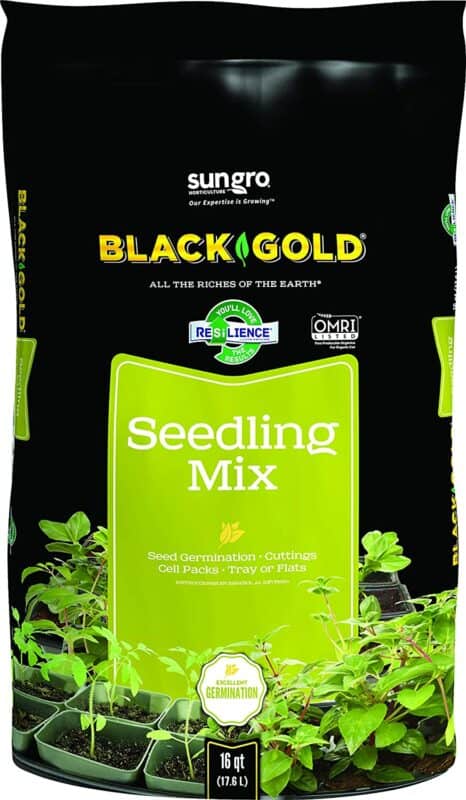
You will feel like you have struck gold when you use the Black Gold 1311002 Seedling Mix. It provides the right foundation to promote healthy root growth for seeds and newly germinated seedlings.
Black Gold is soil-less and it is listed as a certified OMRI organic product with a mix of lightweight, non-clumping, natural forming enriched organic matter that requires less watering over the long term.
This seeding product is fast-acting and within a week you will see your seeds spring to life. The mix contains 70-80% Canadian sphagnum peat moss, and a Yucca extract, an organic wetting agent that is taken from a root vegetable to help stop the soil from drying out. All of these materials will give your seeds the aeration, moisture retention they need to grow up into strong, healthy plants.
Black Gold comes in a 16-quart bag and can be used for germinating seeds indoors under fluorescent lights or in pots on your patio. The mix can be dusty when dry, so thoroughly moisten it before using it.
Pros
- Ideal for seed and seedlings
- Good value for money
- Lightweight mix
- 100% organic
- Works quickly
Cons
- Mix is very dry straight out of the bag
2. Espoma Seed Starter Potting Mix

Whether you are planting herbs, tomatoes, or re-potting your favorite flower, this Espoma Seed Starter Potting Mix will have your garden blooming. With a rich, premium blend of natural ingredients, it is specially formulated for seed cuttings. However, it also works well on newly planted seeds.
The Espoma mix contains sphagnum peat moss, peat humus, perlite, and it is enhanced with My-tone, a blend of mycorrhizae, which is a form of fungus that helps to promote root growth and improves moisture retention. In no time at all your seeds will grow and become strong, healthy, and vibrant plants.
The mix is available in an 8-quart bag, which has a zip-lock to keep any air or moisture out.
Pros
- Good quality
- Organic certified
- Perfect for flower pots and a small herb garden
- Good germination rate
- Absorbs water and drains well
- Handy zip-lock bag
Cons
- Small bag
- Contains a lot of debris
3. Jiffy Seed Starting Peat Pellets

Jiffy Seed Starting Peat Pellets is an ideal product for a newbie gardener or a great way to encourage your kids to develop an interest in horticulture. The pack includes 100 peat pellets which can be used to grow flowers, herbs, or vegetables.
As the pellets are made from renewable raw sphagnum peat moss, all your plants will be free from nasty chemical pesticides or genetic modifications.
Instead of lugging around heavy bags of potting soil, the Jiffy plugs offer you an easy, clean, and convenient approach to indoor or outdoor gardening. All you have to do is add water and the 42mm compressed pellets expand to 7 times their normal size. There is no need to add any soil, just your seeds.
The fine netting that holds the peat together ensures optimal aeration and water filtration and minimizes any root shock or root damage while you transplant seedlings into a larger container or garden bed. The pellets come in 2 sealed bags, so you can store the remaining pellets in a garden shed or under the kitchen sink.
Pros
- Very good quality
- Easy to use 100 seed starter pack is ideal for newbie gardeners or kids
- Can be used for flowering plants, vegetables, and herbs
- Pellets are made from renewable raw Sphagnum peat moss
- Pellets expand up to 7 times their normal size
- Fine netting ensures optimal aeration and water filtration and minimizes root shock or root damage
- Sealed bags allow for easy storage
Cons
- Some of the packets did not contain the advertised pellet size
4. Hoffman 30103 Seed Starter Soil
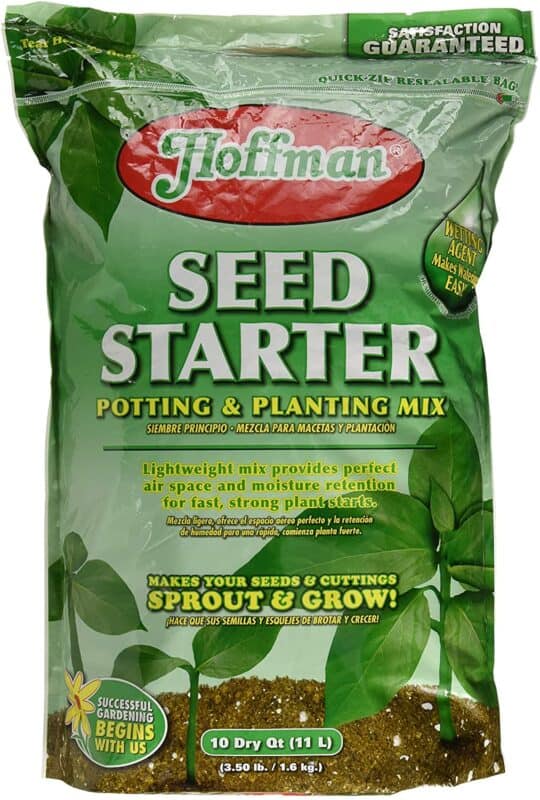
Hoffman has been creating high-quality gardening products for the passionate home gardener since 1934, and the Hoffman 30103 Seed Starter Soil will have your flowers and veggie patch flourishing quickly.
The soil mix contains 6 premium components such as Canadian sphagnum peat moss. All of which are specifically blended to promote superior germination of seeds. You can also use the soil for transplanting and encouraging root cuttings.
As soon as you open the bag, you are greeted with a rich garden smell and the soil has a good ph level that ranges from 5.6-5.9. The soil also has a relatively fine consistency. It absorbs water easily and allows for plenty of air circulation, which is important for seeds to become healthy and strong plants.
The soil comes in a 10-quart pack that has a handy ziplock to keep the soil safe from any moisture or air contaminants. If you would like a complete list of the ingredients in this mix, you can contact the supplier @goodearthsales@goodearth.org.
Pros
- Ideal for seeds and cuttings
- Very good quality
- Premium soil mix
- High water absorption rate
- Allows for good air circulation
- Good seed germination
- Zip-lock bag
Cons
- Some seeds are slow to germinate
5. Kempf Compressed Coco Coir Block
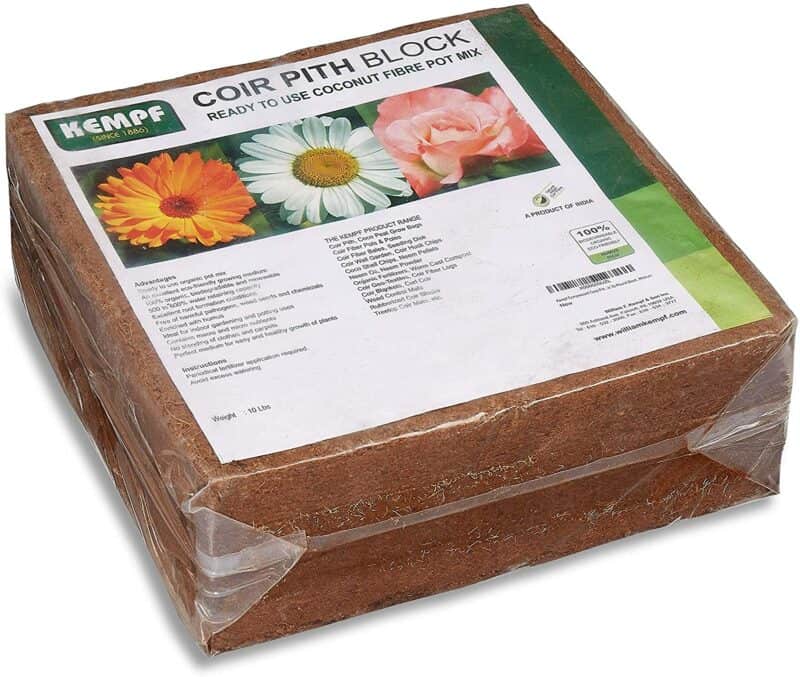
The Kempf Compressed Coco Coir Block is the perfect seed starting medium for kickstarting the healthy growth of your vegetables and flowers. The block is made from coconut coir fiber, and as the fiber is 100% organic, biodegradable, pH neutral, mildew-resistant, bug-resistant, free from chemicals and weed seeds, it will give your plants their best chance to flourish.
Kempf uses macro and micro-nutrient-rich coconut coir pith that is environmentally friendly and is a natural, sustainable alternative to peat moss. Coconut coir is more effective at hydrating the soil and releasing life-giving nutrients and moisture to seeds and plant roots.
The coir fiber comes in a 10lbs block and when you mix it with water it expands to 17-gallons of potting mix, so a little bit goes a long way. It can be used for a wide range of gardening purposes: seed germination, hydroponics, cultivating mushrooms, worm beds, and landscaping corrosion control.
The block is easy to use, just add the required amount of warm water to the fiber. Wait 10 minutes. Stir. Sit back and relax and watch your seeds spring to life. You can also mix the coir in with other soils, but it works very well by itself.
This seed starter block can be stored for long periods, but make sure the packet is well sealed to stop mildew.
Pros
- Affordable
- Excellent-quality
- 100% organic and environmentally friendly coconut coir fiber
- Can be used with or without soil
- Good hydration
- Very effective
- Versatile
- Easy to use brick
Cons
- May need to wash more than once due to the salt content
- No zip-lock bag
Our Top Pick for the Best Seed Starting Mix

Our top pick for the best seed starting mix is the Jiffy Seed Starting Peat Pellets.
These seed starting pellets are the easiest way to get your indoor or outdoor planting projects done. Once you plant seeds or seedlings in the quality peat, you and your kids will love watching your budding plants turn into beautiful blooms and healthy vegetables.
Check the price on Amazon
